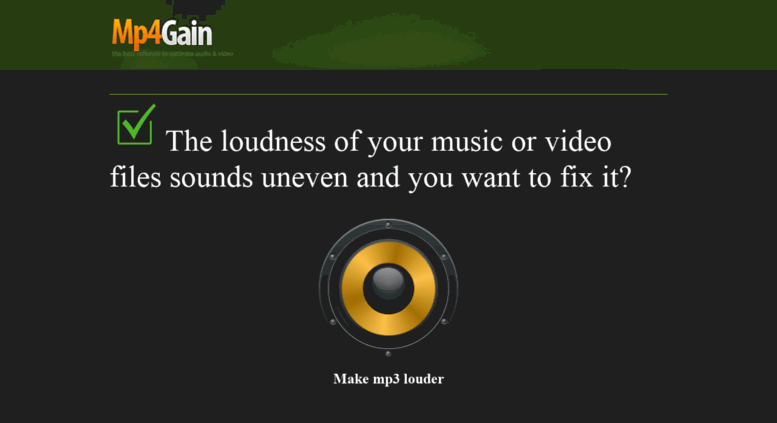
Similarly, we observe many on never-ending search for 'mastering' plugins that will magically make mixes sound 'professional'. Often we see new producers mixing and mastering at the same time, getting confused and ending up with disappointing results.
#Mp3 gain edm how to
I never notice it, anyway.This section explains how to use the tools at your disposal to create a good mix. This small amount of difference (0.75 dB) has never seemed much to worry about. If you let mp3gain alter these tracks to a reference of 94.1 dB then I believe these are the changes you should see.ĩ7.9 - 3.8 = 93.5 dB (4.5 dB subtracted, multiples of 1.5 dB only, remember)ġ01.1 - 7.0 = 93.6 dB (7.5 dB subtracted)Īs you can see, all the tracks would be brought as close as possible to your 94.1 dB reference point, but because we are working in 1.5 dB steps we can be +/- 0.75 dB away from the target. We can only get it close because of that 1.5 dB change restriction.

The first change of 3.8 isn't an exact multiple of 1.5 dB so this means it won't match the reference track exactly. So each track would have to be turned down by that many dB to match the reference track we've chosen. Subract reference value of 94.1 to get necessary change to hit reference value: The lowest value is 94.1 dB, so let's use that for this example. The actual audio data is not changed at all.Īs for the 1.5 dB step thing, take your sample list of files in the screenshot you posted. All that is happening here is a simple change to a reference value. You would lose quality if you were decoding the audio data and making a completely new mp3 from scratch with that decoded data, but that is not what is happening here. You can change it a zillion times to a zillion different values and then change it back to the original value and your file will be bit-for-bit exactly the same as when you started. All you are doing with this processing is changing a single number that describes how loud things are. Usually the only time something will go wrong is if you have a corrupt file, anyway. And if you're using your own experimental copies then if something goes wrong it doesn't matter anyway. It makes processing faster, as it doesn't do a file copy for each and every file. It's pretty safe to checkmark "Do not use temp files" if you ask me. If your device's amplification is a restriction, and you hit the device's maximum before you hear it as loud as you want to hear it, you may want to preserve more volume in the files.

If you can turn up the listening device enough to get the volume you want to hear, then there's nothing wrong with the default of 89.0 dB.

If, however, you're going to be listening through some kind of amplifer/stereo system that has a volume knob you can turn up as much as you want then how much volume you retain in the file becomes less important. If you're going to be listening on something like an iPhone and headphones, which means you have to live with the restrictions of how loud that device can go, then you are better off retaining as much original volume as you can get away with. You can make this as easy or as complicated as you like.

If you're going to do your entire collection it wouldn't hurt to analyze it all to find the track with the lowest volume and use that as your reference. That one track would be left alone and then the rest of the files could be matched to that quietest track, while retaining as much overall volume as possible. The lowest volume there is 94.1 dB, so if I were working with only those files and didn't care how they matched the rest of my collection I would probably just use that 94.1 dB as my reference. Takes less time to simply delete the experimental batch of files than it does to restore the originals to their original state, and that way there's no risk, either.įor that particular batch of files you can see that even unmodified they already contain clipping. Even though it is possible to go back and undo the changes, it makes experimenting easier if you're just using copies you can throw away. Best advice I can give is make copies of some tracks to experiment with, so that you're not modifying your originals in a way you may not want to.


 0 kommentar(er)
0 kommentar(er)
